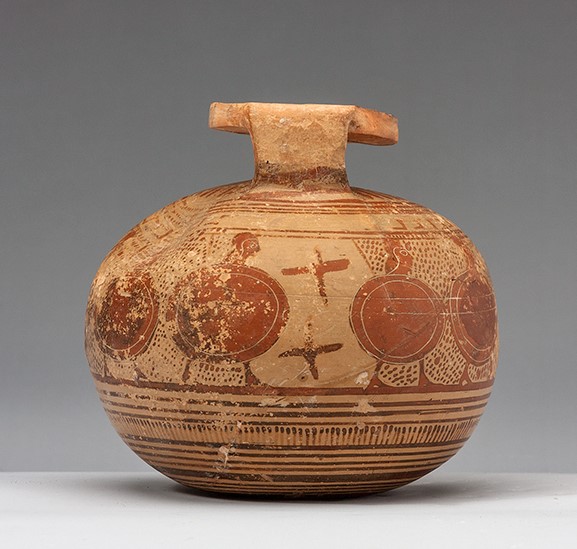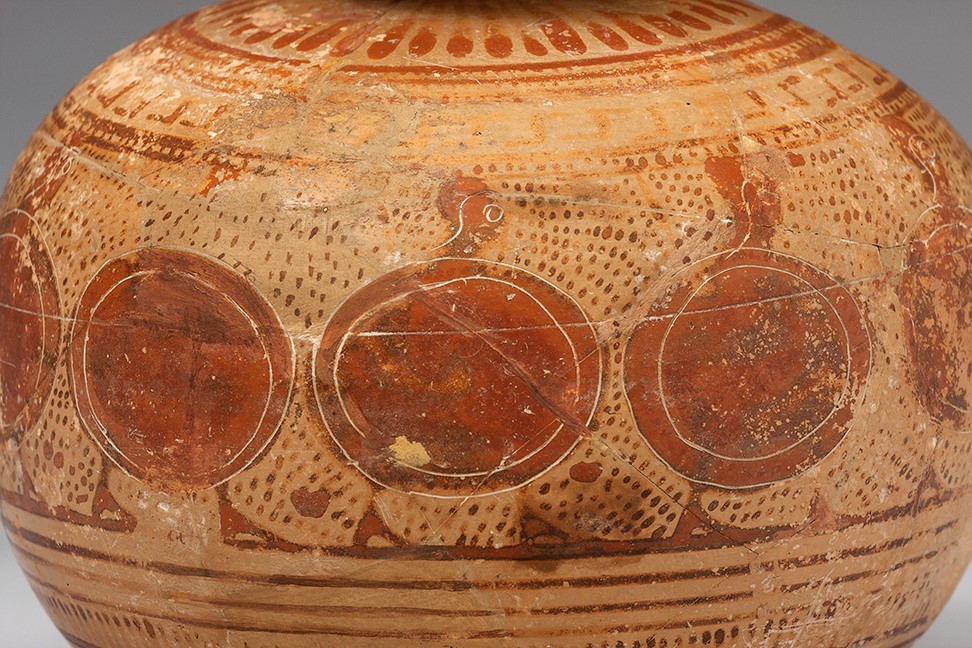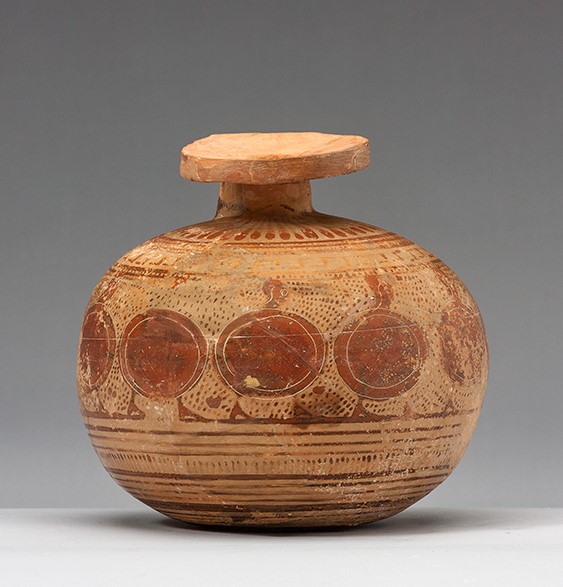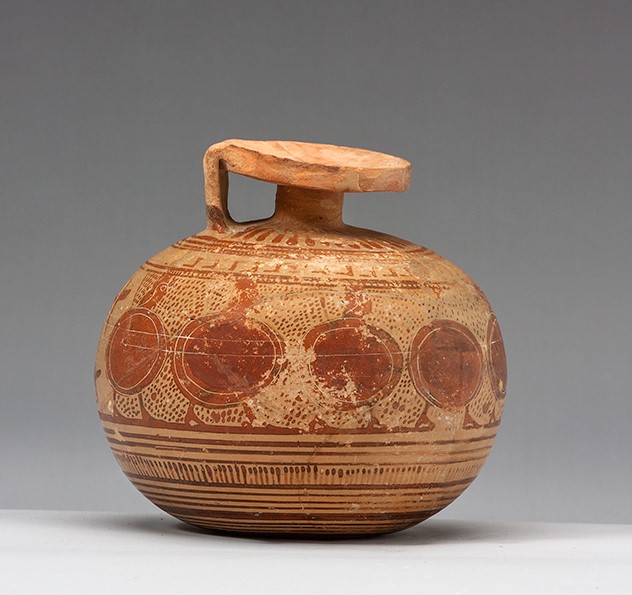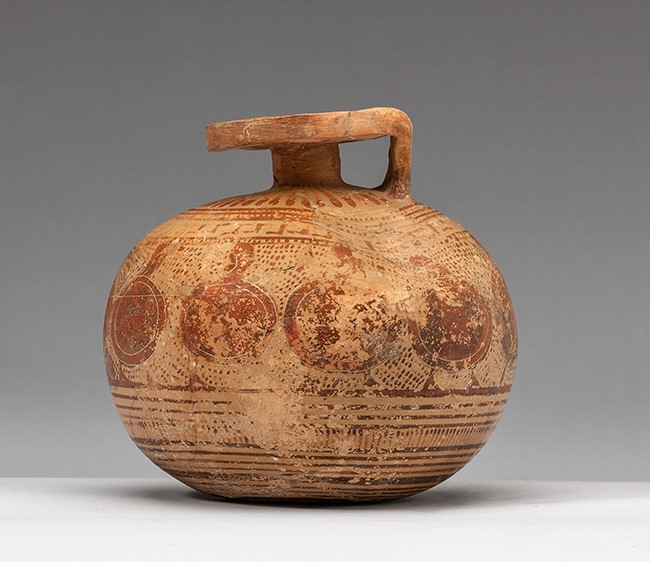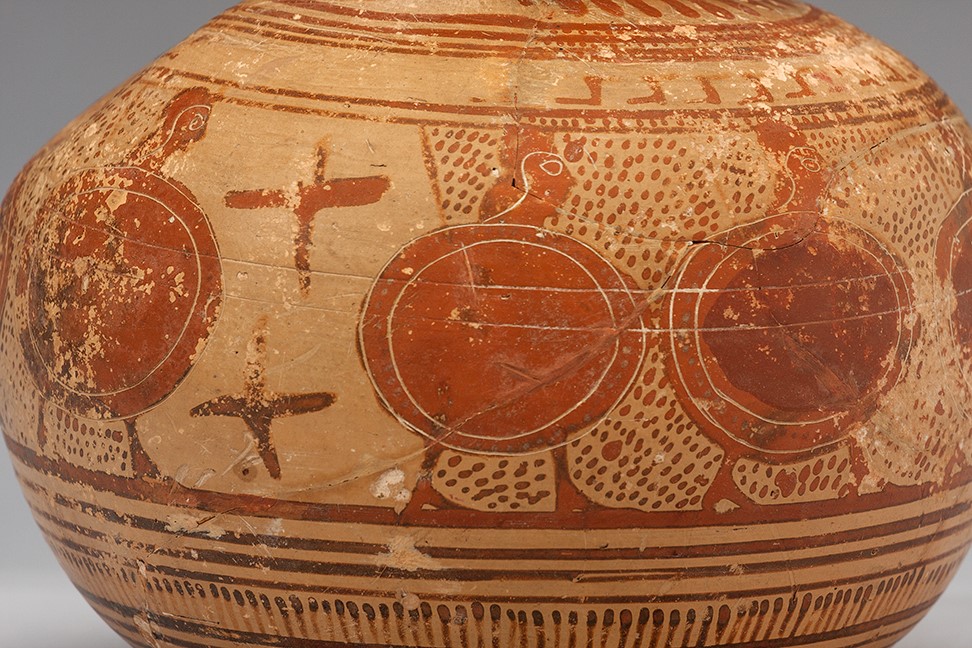Acquisition number: 2009.01
The warriors move in a seeming procession from left to right (a means of showing them moving in hoplite ranks); they have no spears, and one of them is even headless. The background is filled with dots or short strokes, the effect that Payne once described as a hail-storm (Necrocorinthia 320), except that the dots are omitted for a space immediately below the handle, at the back, and replaced by two Xs. (Corinthian orientalising pottery had steadily developed a horror vacui.) Hardly any of the warriors has a spear.
Title: Corinthian Aryballos - 2009.01
Acquisition number: 2009.01
Author or editor: J.R. Green
Culture or period: Middle Corinthian.
Date: c.570 - 550 BC
Material: Clay - Terracotta
Object type: Vessels - Aryballos
Dimensions: 132mm (w) × 122mm (h)
Origin region or location: Greece
Origin city: Corinth.
Display case or on loan: 3
Keywords: Corinthian, Middle Corinthian, hoplites
Bonhams Antiquities London (April 2009) no. 130 (ill.).
2009.01
Corinthian Aryballos
Presented by the Friends of the Classics Museum. Ht. 12.2cm; width 13.2cm.
Some minor fragments missing and restored, especially at the neck of the vessel. The warriors move in a seeming procession from left to right (a means of showing them moving in hoplite ranks); they have no spears, and one of them is even headless. The background is filled with dots or short strokes, the effect that Payne once described as a hail-storm (Necrocorinthia 320), except that the dots are omitted for a space immediately below the handle, at the back, and replaced by two Xs. (Corinthian orientalising pottery had steadily developed a horror vacui.) Hardly any of the warriors has a spear.
See Délos x, pl. 24 for small warrior aryballoi, including nos 274 and 275 with partial hailstorms. Pll. 25-26 have larger aryballoi of the same general form as ours, slightly flattened at the bottom. For an actual flat-bottomed aryballos with two-row spearless warriors in a hailstorm, pl. 28, 354. For a somewhat comparable style of drawing, note the alabastron pl. 31, 457, although those include a line for the mouth and have their feet flatter on the ground. See also what is now a classic treatment: P.N. Ure, Aryballoi and Figurines from Rhitsona in Boeotia (Cambridge 1934) 23, 38-39, 97-99. For an aryballos of roughly the same period decorated with two rows of warriors (and worse-drawn ones), see J. Boardman, Early Greek Vase Painting (London 1998) fig. 367. Compare, though different in style, C.W. Neeft, “ΑΓΑΝΟ ΑΓΑΠΩ. A Corinthian Workshop of Warrior Aryballoi”, in: M. Gnade (ed.), Stips Votiva. Papers presented to C.M. Stibbe (Amsterdam 1991) 127-131.
Bonhams Antiquities London (April 2009) no. 130 (ill.).
